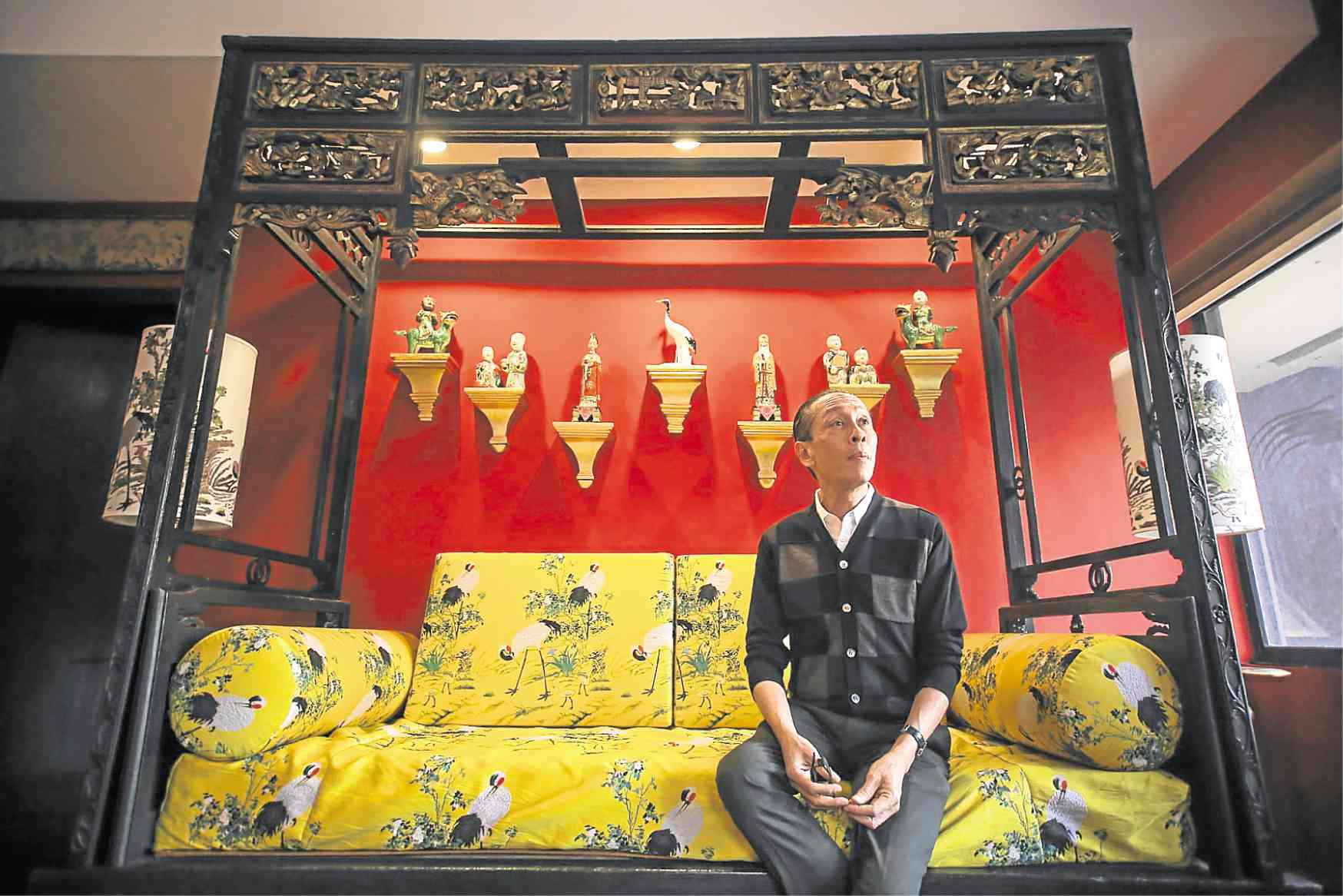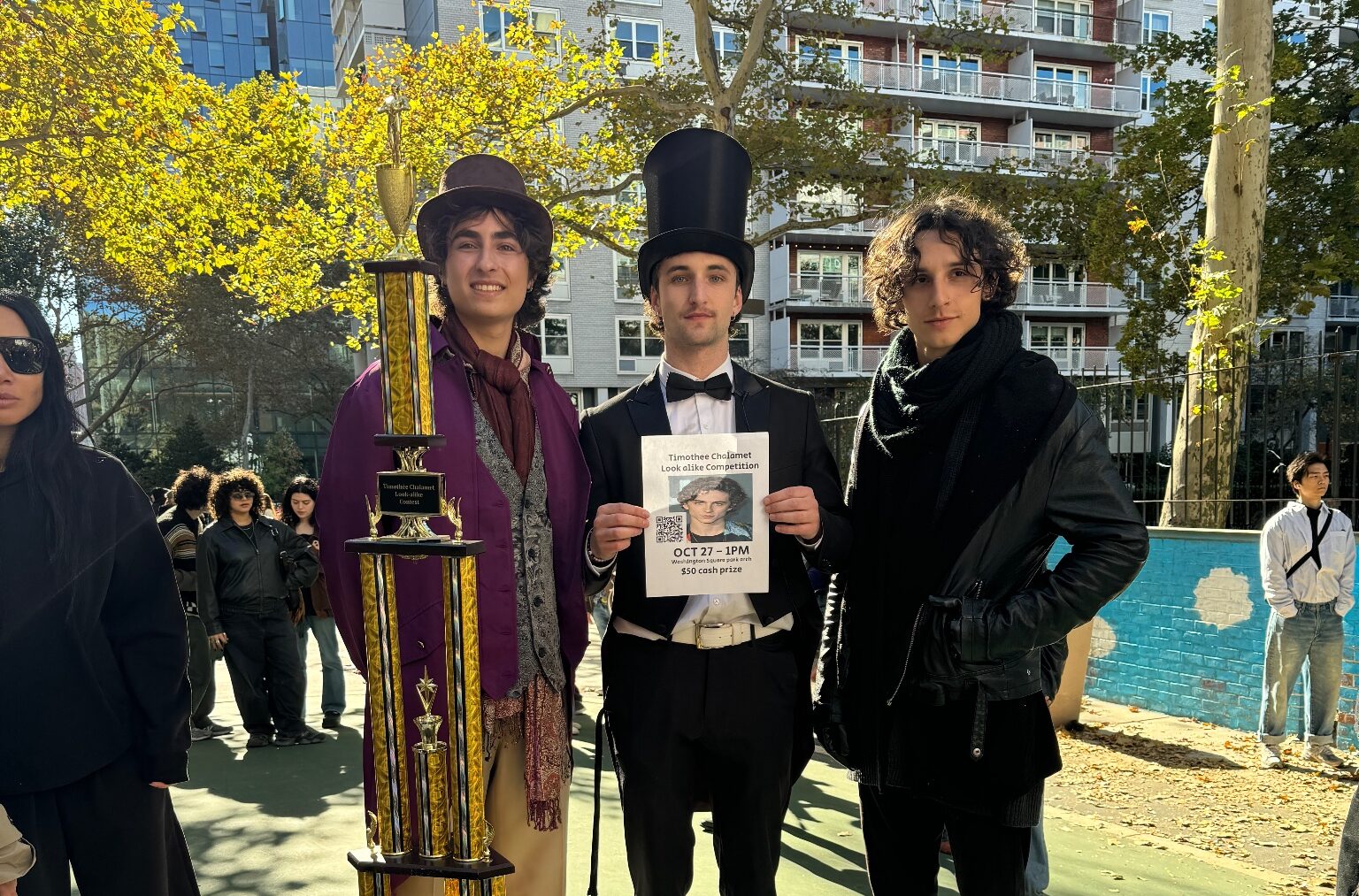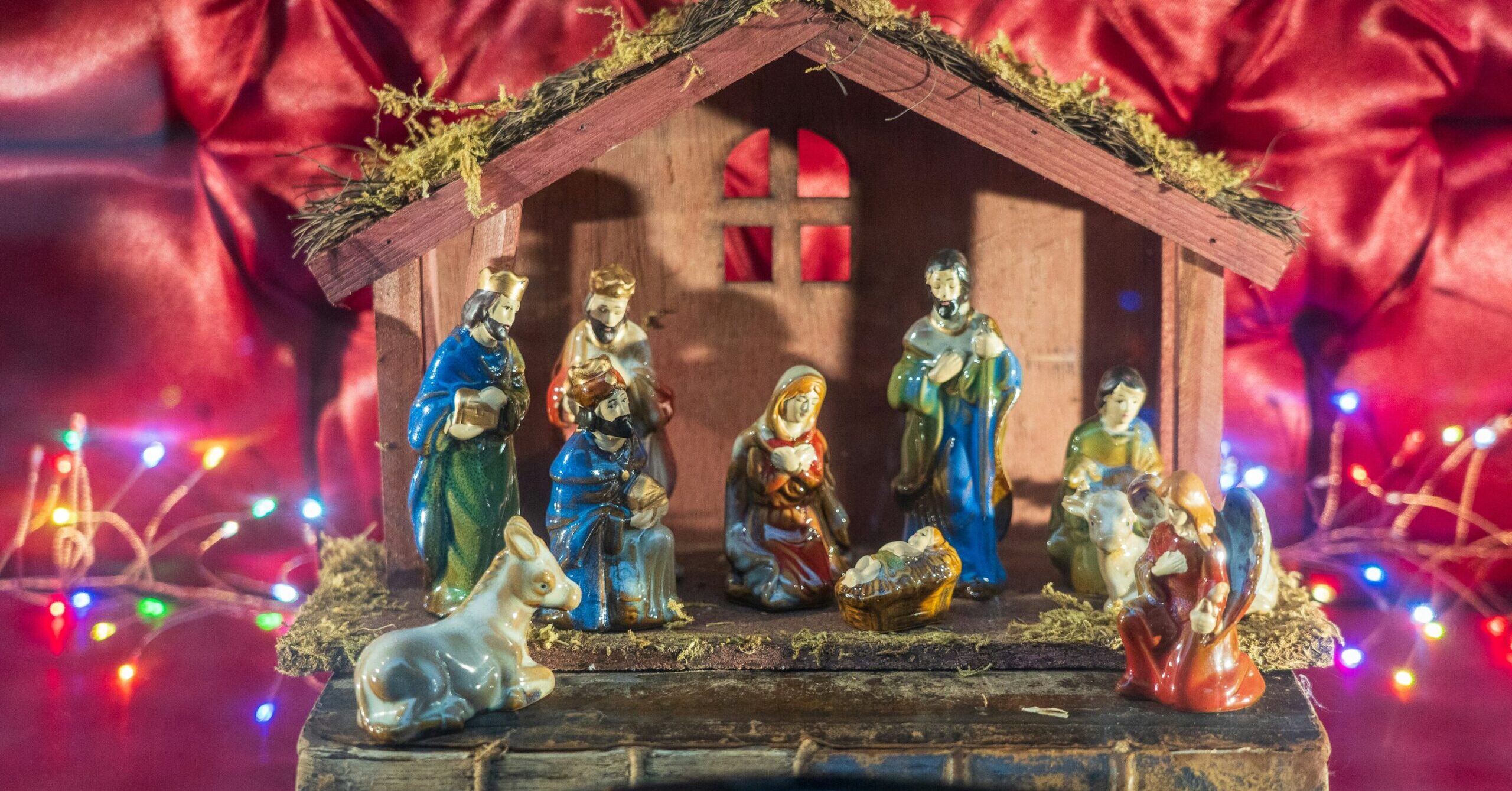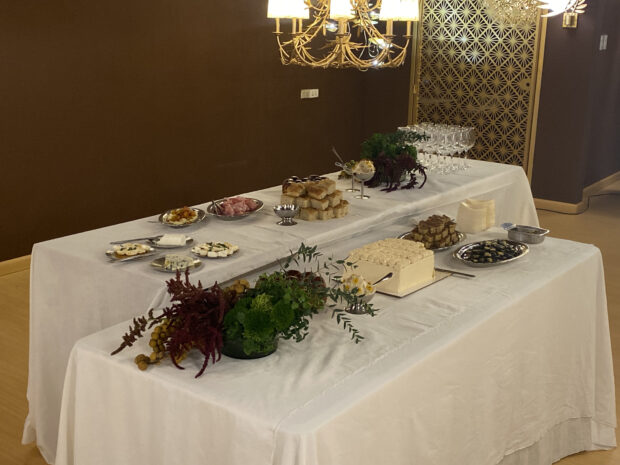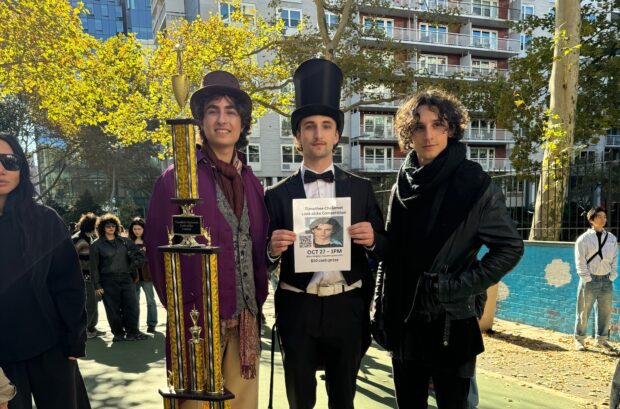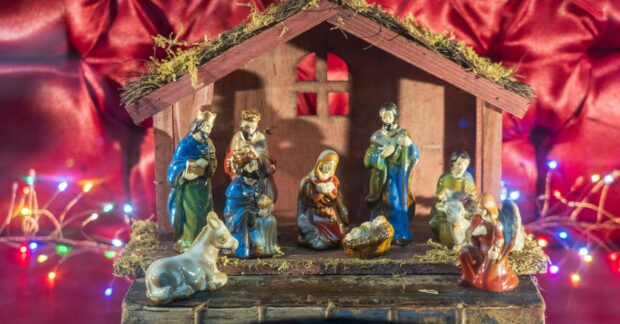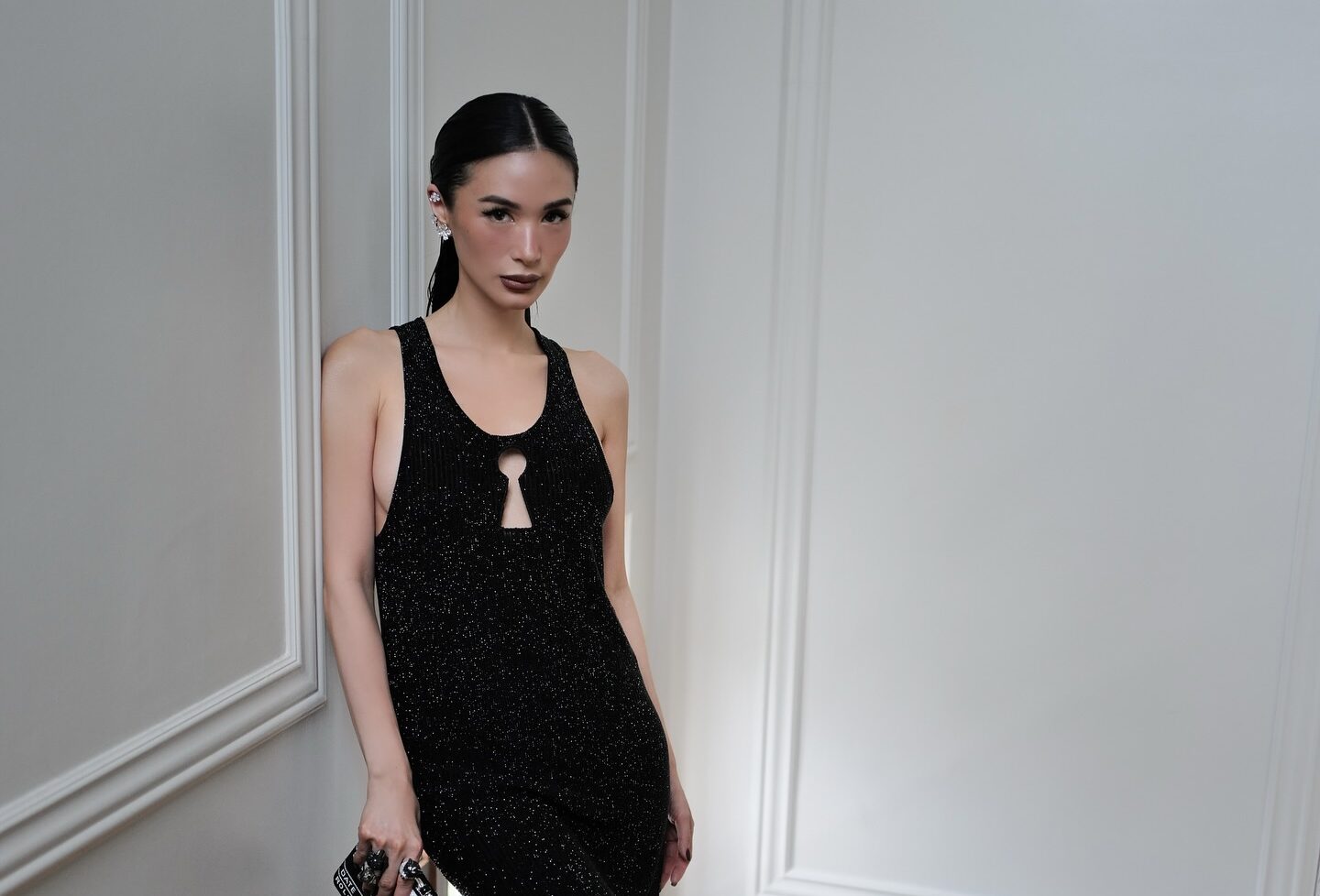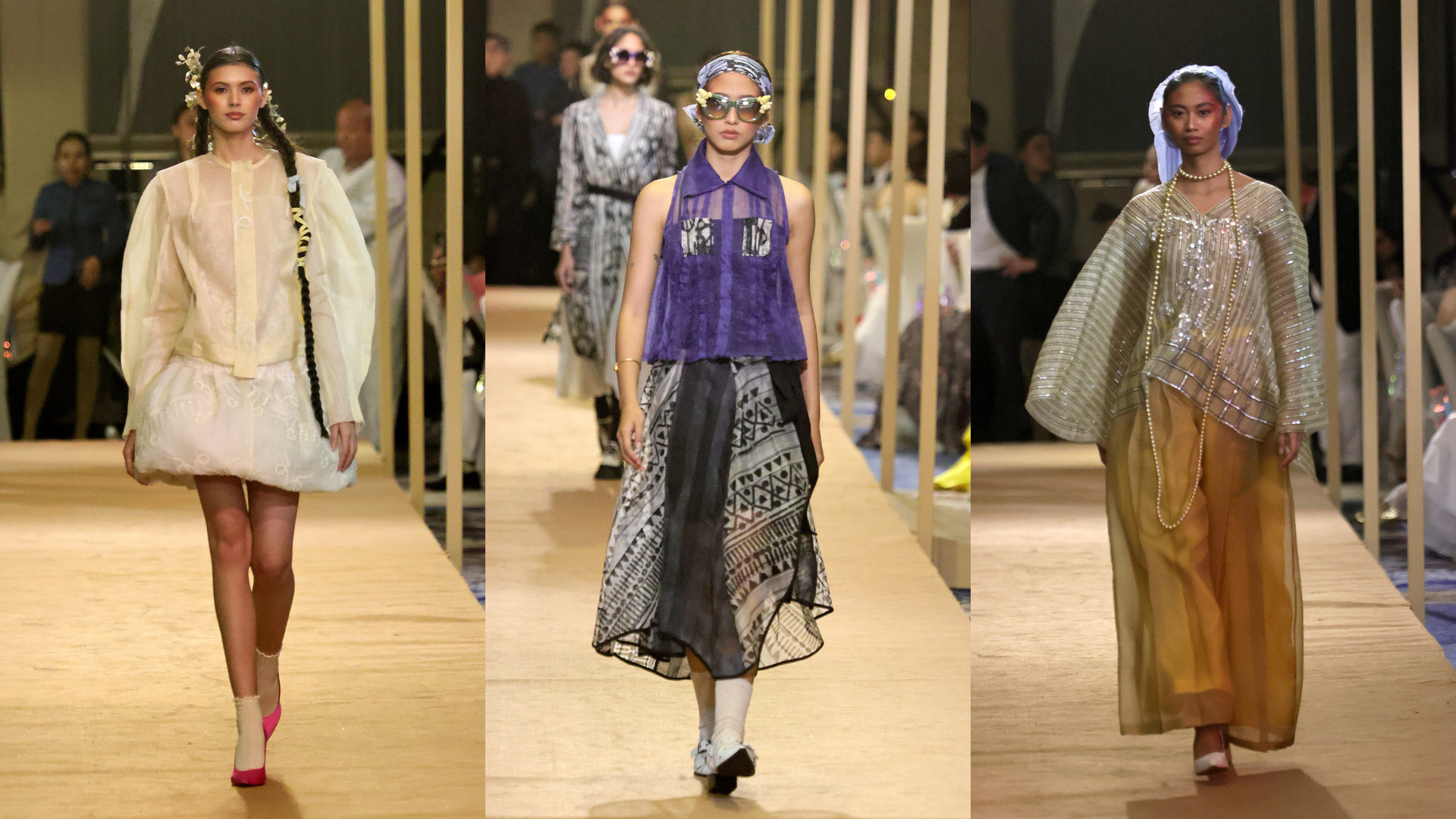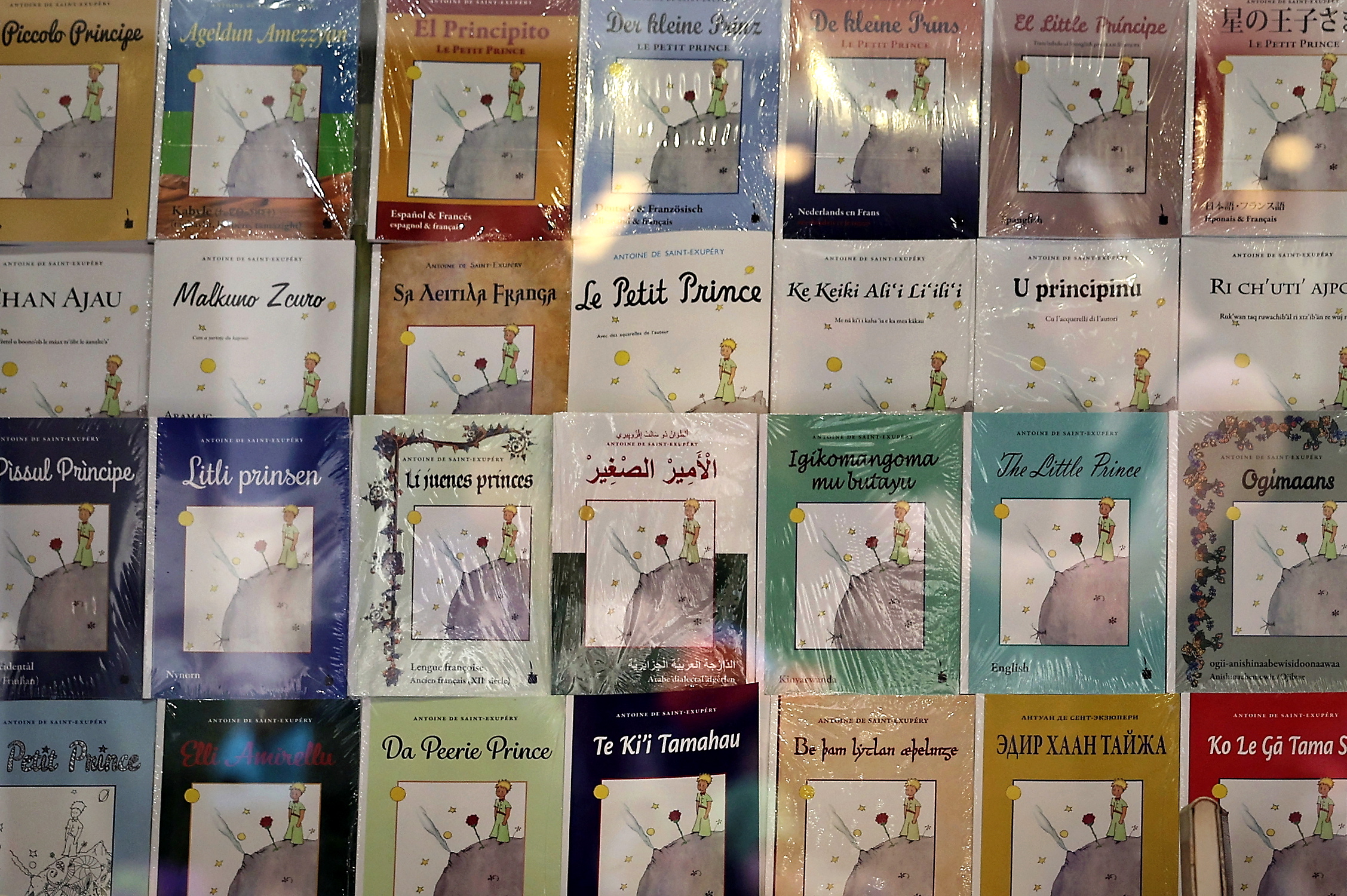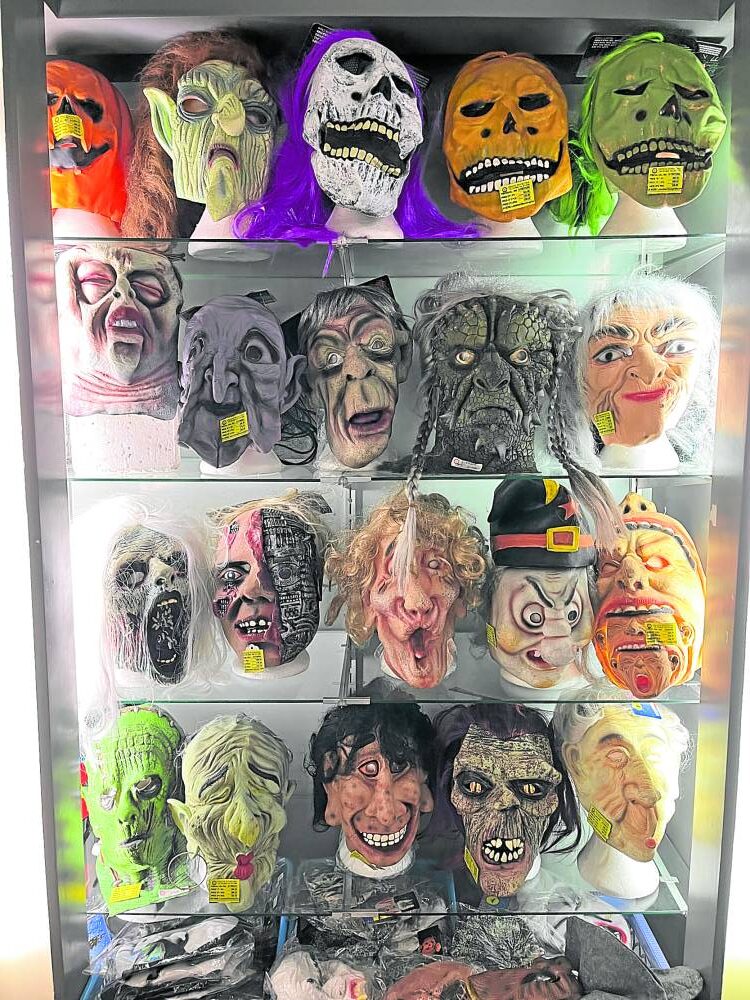
Mark Lewis Lim Higgins’ marvelous paintings seem to emanate from an alternate universe, where the Philippine archipelago was never colonized by Spain or converted to Christianity, but continued a flourishing trade and cultural exchange with its Asian neighbors.
In this parallel reality, the Philippines was a far southern outpost of the Silk Road, drawing influences from as far as Tibet, Mongolia, Central Asia, the Middle East and Persia, and evolving its own unique hybrid culture.
“I find it’s a very common misconception that we became civilized only after we became Catholic,” says the artist.
“Even before the Philippines became a united archipelago, it was already a global culture. It was very sophisticated. This work is a celebration of that part of our history.”
We are in Higgins’ pied-à-terre/studio to preview “Gold in Our Veins,” the artist’s latest collection of paintings, to be exhibited at the Ayala Museum from Feb. 21 to May 26.

As the central element in an installation by Gino Gonzales, Higgins’ works will be shown with a specially curated selection from the museum’s rich hoard of Philippine archeological gold, indigenous textiles and costumes, Chinese tradeware ceramics and other artifacts that relate to the artist’s work.
Alternate universe
Higgins’ studio is itself an alternate universe amid the gleaming steel and glass of the Makati business district, packed full of the antiques and artifacts that inspire him: carved camphor chests, giant Chinese ink brushes, a Koran stand on which rests Aubrey Beardsley’s “Le Morte d’Arthur” and another on which is open “The Travels of Marco Polo,” a selection of ornate headdresses and medieval helmets, calligraphy in Arabic and other ancient scripts, and all manner of Chinoiserie.
Of course, Higgins’ own artworks hold pride of place.
“My mother always used to tell me I was an old soul,” he says.
Mother was Philippine fashion pioneer Salvacion Lim Higgins, more familiarly known as Slim, who founded her eponymous fashion and arts school in 1960. Its core curriculum, popularly known as “Slim’s Method,” provided much of the foundation of today’s fashion industry.
Since her death, Higgins and his sister Sandy have been preserving her legacy by continuing the school on Pasong Tamo, a short walk from the studio.
“When we took over the school, I realized I had so much experience and firsthand knowledge from my mother that I wasn’t really using, and that would be valuable to a student,” says Higgins. “That was how I ended up playing a role in the school—sharing what I know.”
“Gold in Our Veins” marks Higgins’ return to painting after a hiatus of more than 10 years, during which he worked on the groundbreaking fashion book “Slim: Salvacion Lim Higgins” with Lifestyle editor Thelma Sioson San Juan, and “Fashionable Filipinas: An Evolution of the Philippine National Dress in Photographs” with Gino Gonzales, apart from helping at Slim’s.
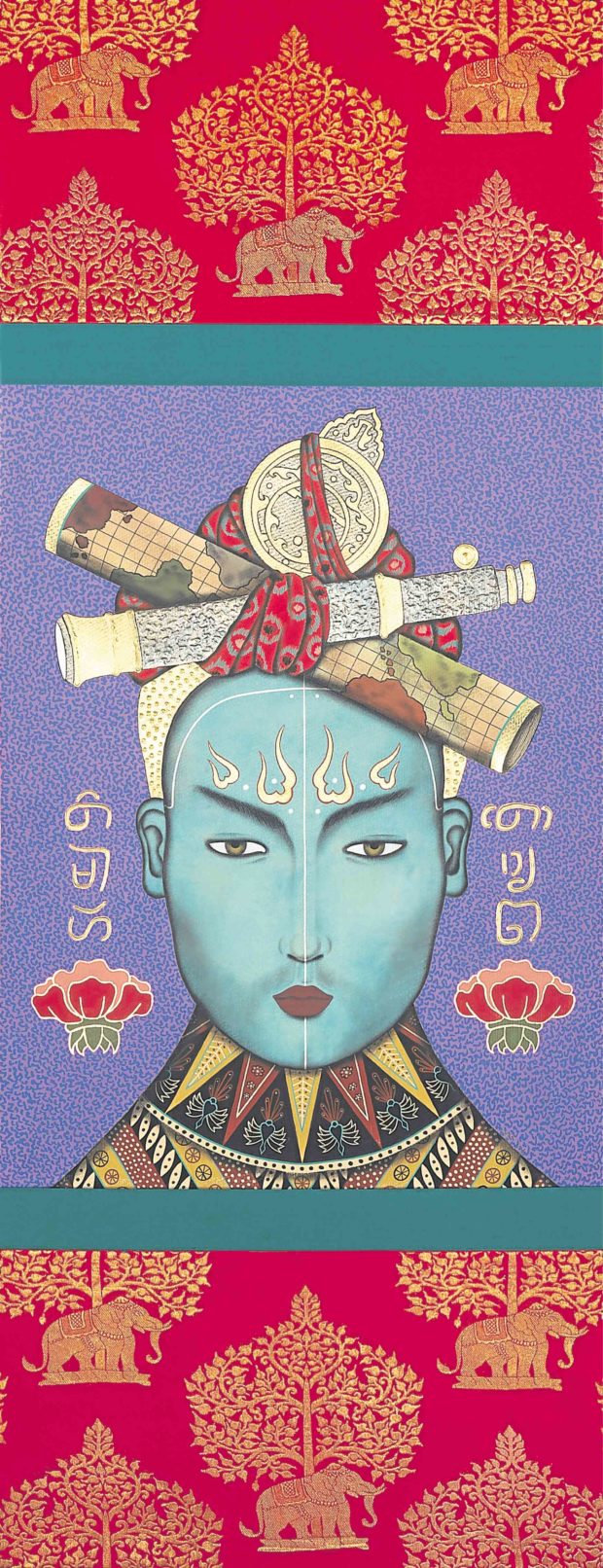
Geography of inspirations
“Every time I start a new collection, there’s a geography of inspirations. This is the first time I’ve done Southeast Asia.”
Through his previous exhibits, most notably the trilogy of “Invisible Cities,” “Tribes” and “Diaspora,” Higgins became known for crafting exquisite artifacts in which painting was only part of the finished artwork.
Inspired by religious icons from the Orthodox and Coptic traditions of Eastern Europe, North Africa and the Byzantine empire, he incorporated gold leaf, semiprecious stones, rich textiles and elaborately carved frames into striking three-dimension pieces with multiple layers of meaning constructed onto the artwork.
“After that I made my mind up to go back to flat because it’s what I enjoy the most—old-fashioned drawing and painting. Also, I got a bit tired of all the crafting; it was slowing me down. I didn’t want to be ‘the guy who does the paintings with the gems,’ you know what I mean?”
In the present collection, even the textiles are painted, though viewers can be forgiven for mistaking them for real t’nalak, ikat and batik. Higgins works primarily with water-based paint on paper and occasionally fabrics such as Chinese silk.
Gone are the gemstones, although gold leaf is still a crucial element in his palette.
“Ambeth Ocampo hit the nail on the head when he compared my works to illuminated manuscripts,” he says. “I love the format and the idea of using gold.”
The ancient world has been a bottomless well of fascination and inspiration ever since Higgins can remember.
“I was one of those weird kids who was always in the library,” recalls Higgins, who spent his formative years at the International School. “I was very introverted. There was something very nerdy about me.”
He buried himself in books on ancient Egypt, the Koran, the Bible—anything on the ancient world, its spirituality and its art.
“I found all of it interesting, even as historical texts,” he recalls. “I realized that if you understand the past, you can understand the present. After nearly 10 years of working in the school, I’m exposed to millennials and it’s incredible, the lack of awareness that the past is relevant. To truly understand identity, one has to understand where one came from.”
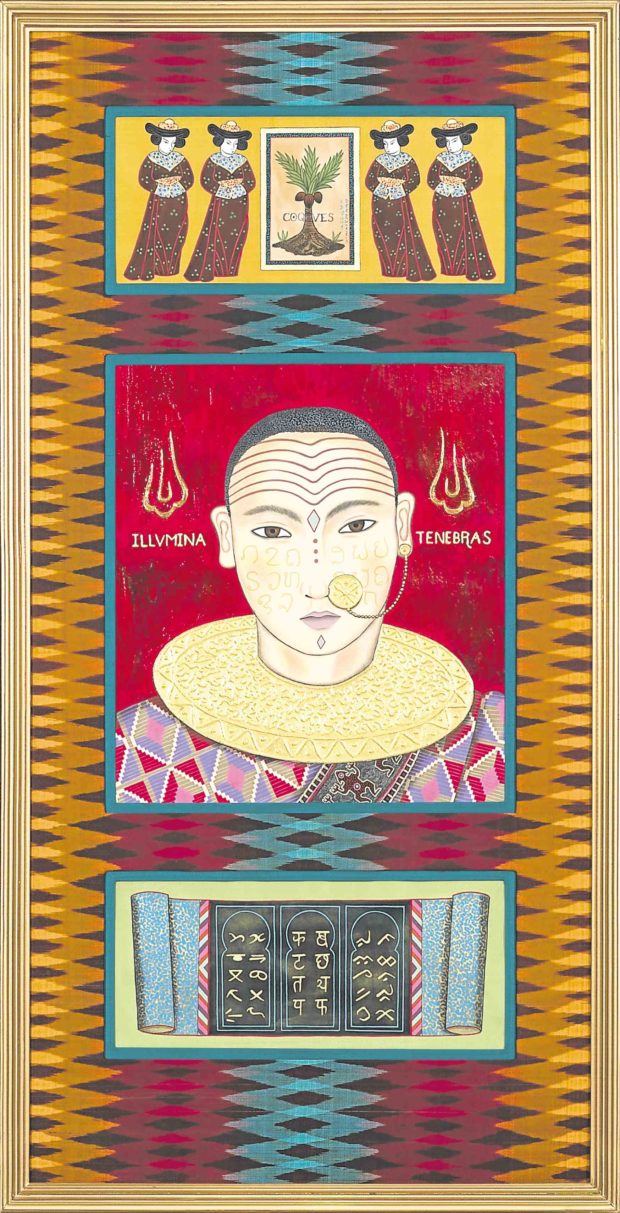
Starving artist
Eventually, Higgins went on to study fine arts in Toronto, although he hedged his bets by also studying fashion design in New York.
“When I was young I thought, ‘Do I really want to be a starving artist? Maybe a career in fashion was more feasible,’” he recalls. “Curiously enough, my mother always used to tell me, ‘You should stick to painting, you’ll have a far more interesting life if you do, you’ll meet far more interesting people’— and she was right.”
Slim herself studied fine arts at the University of Santo Tomas under Carlos “Botong” Francisco.
Her art education was cut short by the war, and in its aftermath she decided to pursue fashion, but she always considered it a continuation of her artistic life.
Cultural cross-fertilization has always been central to Higgins’ identity, as he writes in his artist’s statement for “Gold in Our Veins.”
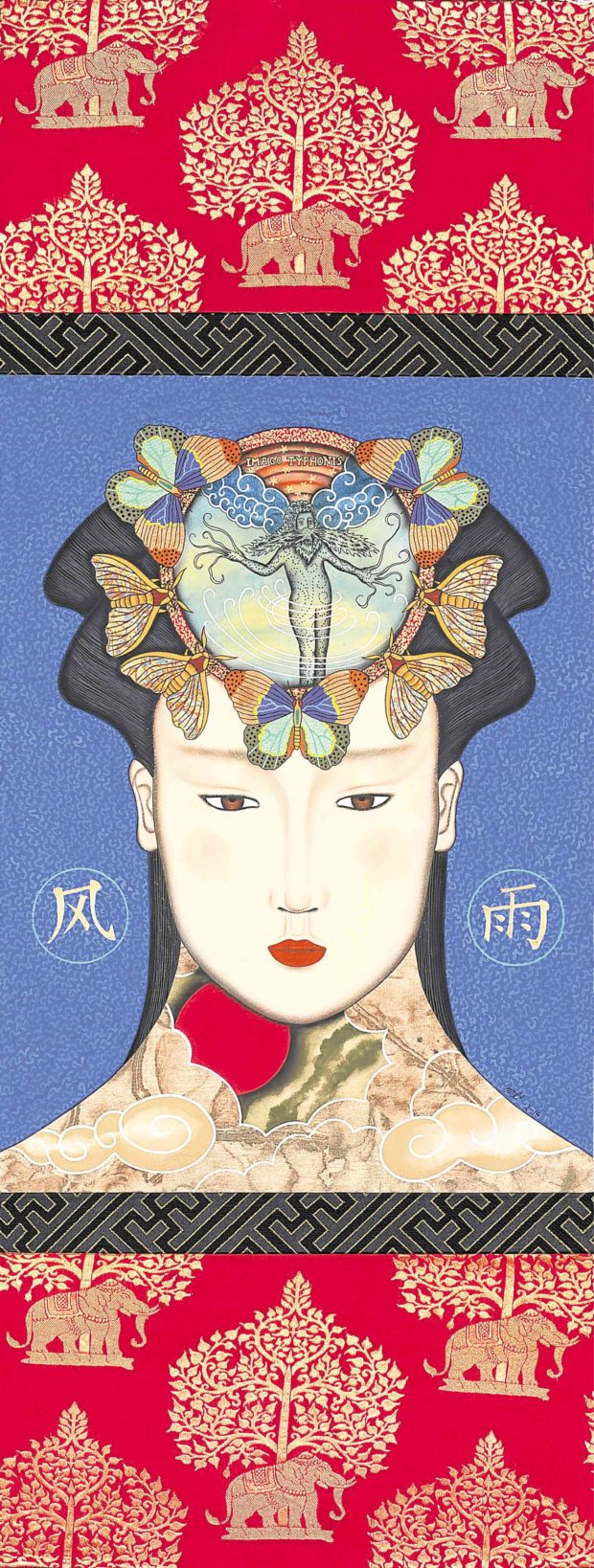
“Having been born to an Anglo-Irish father and a Chinese-Filipino mother, it was always effortless for me to tread between the worlds of ‘east’ and ‘west’—to imagine the most unlikely possibilities or juxtapositions in just about anything. . . My mother, Salvacion Lim, began as a painter then evolved into a fashion designer—fearlessly experimenting on sculptural masterpieces of shape, line and color—choosing fabric as her means of expression…
“It is from her that I learned how clothing and textile could form just as powerful a narrative as any other artistic medium. This series of paintings is ultimately a celebration of my own hybrid lineage. Indeed, it is homage to all of our ancestries—particularly to ones so deeply rooted in our DNA and of which many Filipinos may have never even been aware. Far beyond the limits and borders of what become countries or nations, we are all maps of our ancestors. This is my tribute to the gold that flows in all of our veins.”
In his younger days, Higgins trotted the globe. With his responsibilities at Slim’s Fashion and Art School, and his own art practice still unfolding and evolving, he has come home.
“What I want is for young people to realize that this is a very different kind of art, but it is Filipino art because I was born and raised here, and I’m Filipino,” says Higgins.
“It doesn’t always have to be about carabaos and planting rice and the Virgin Mary and poverty porn. Enough already. What I want is to have something really beautiful to look at that’s inspired by this rich history we have, but is often overlooked or not properly taught in schools.”
“Gold in Our Veins: Mark Lewis Lim Higgins” will be on exhibit in the Ground Floor Gallery of the Ayala Museum from Feb. 21 until May 26. Visit www.marklewishiggins.com.

